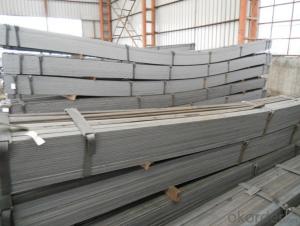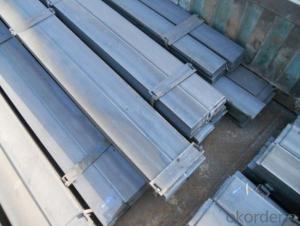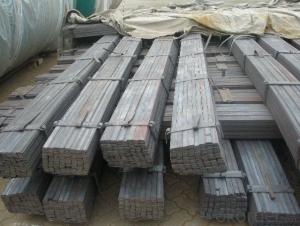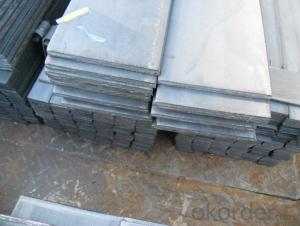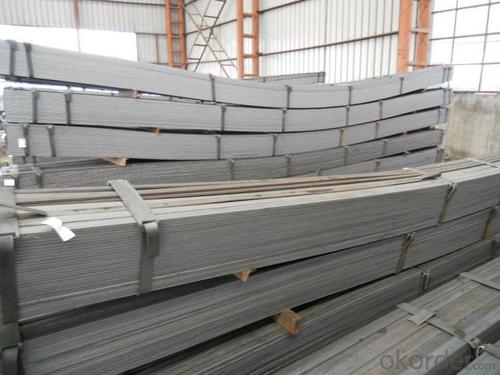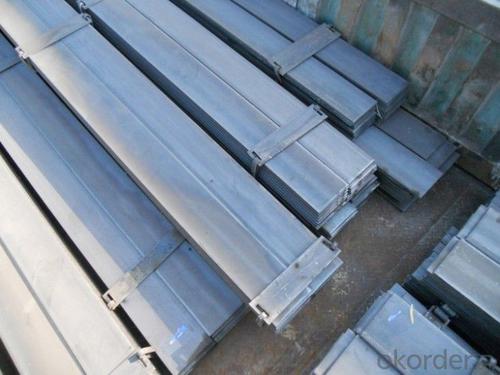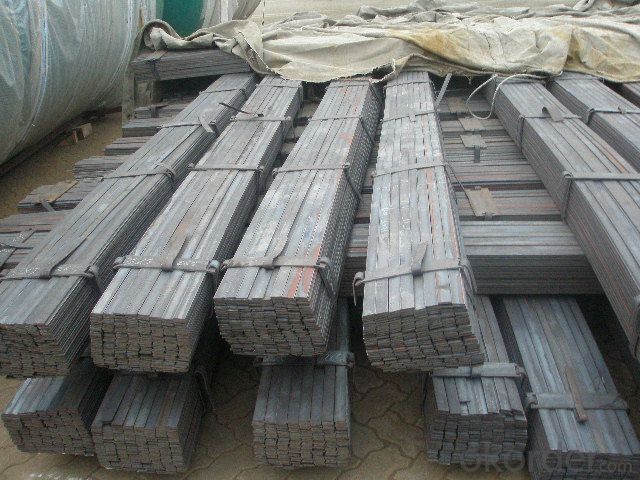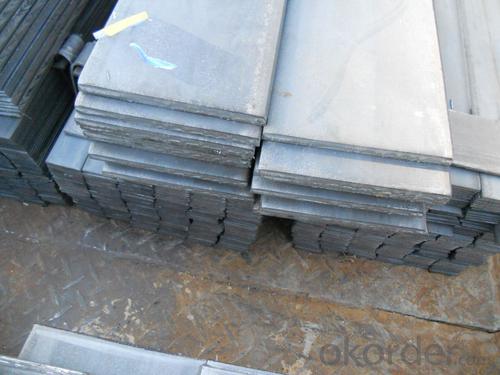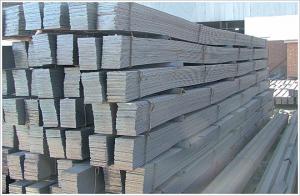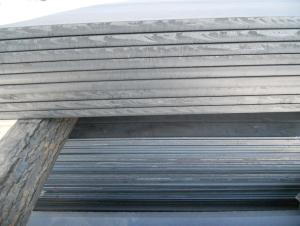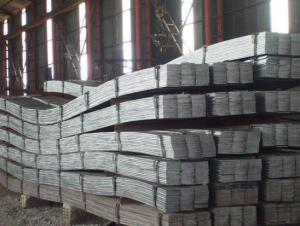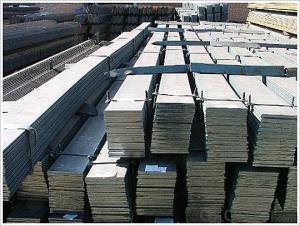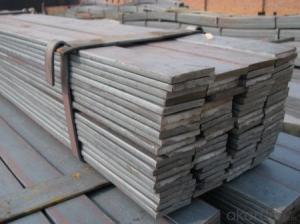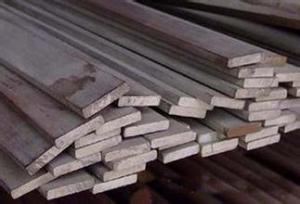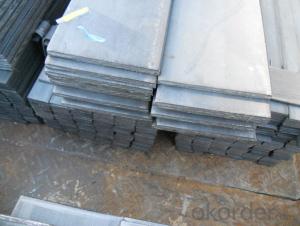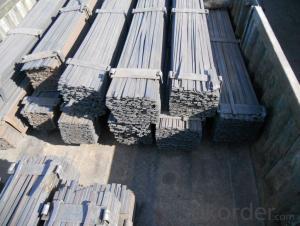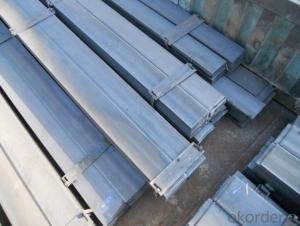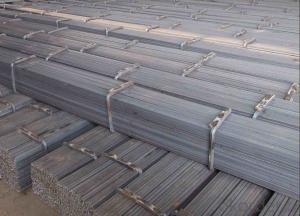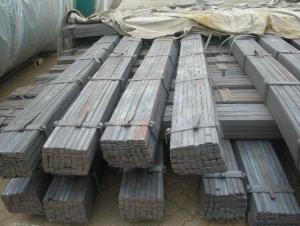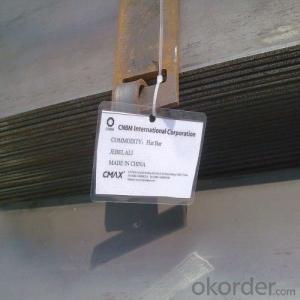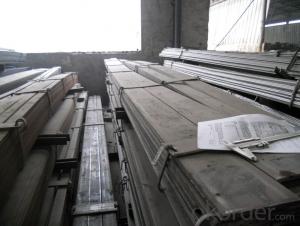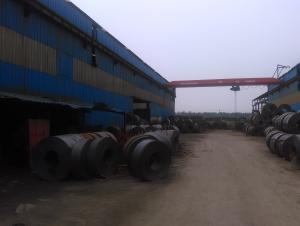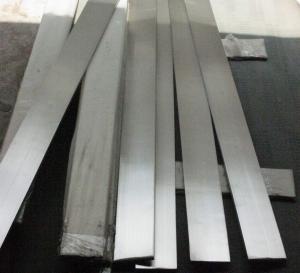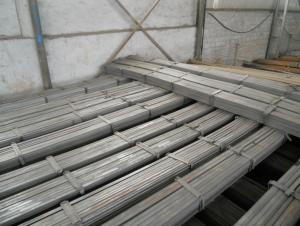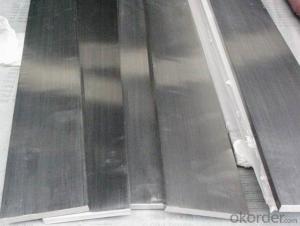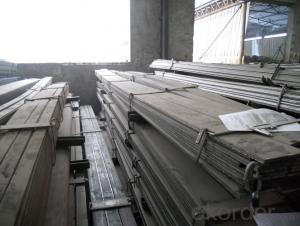Hot Rolled Steel Flat Bars with Material Grade Q235
- Loading Port:
- Tianjin
- Payment Terms:
- TT OR LC
- Min Order Qty:
- 25 m.t.
- Supply Capability:
- 10000 m.t./month
OKorder Service Pledge
OKorder Financial Service
You Might Also Like
Product Description:
OKorder is offering high quality Slit Cutting Flat Bar at great prices with worldwide shipping. Our supplier is a world-class manufacturer of steel, with our products utilized the world over. OKorder annually supplies products to European, North American and Asian markets. We provide quotations within 24 hours of receiving an inquiry and guarantee competitive prices.
Product Applications:
Slit Cutting Flat Bars are ideal for structural applications and are widely used in the construction of buildings and bridges, and the manufacturing, petrochemical, and transportation industries.
Product Advantages:
OKorder's Slit Cutting Flats Barare durable, strong, and resist corrosion.
Main Product Features:
· Premium quality
· Prompt delivery & seaworthy packing (30 days after receiving deposit)
· Corrosion resistance
· Can be recycled and reused
· Mill test certification
· Professional Service
· Competitive pricing
Product Specifications:
Manufacture: Slit Cutting
Grade: Q195 – 235
Certificates: ISO, SGS, BV, CIQ
Length: 6m – 12m, as per customer request
Packaging: Export packing, nude packing, bundled
Chemical composition of Q235
Alloy No | Grade | Element(%) | ||||
C
| Mn
| S
| P
| Si
| ||
Q235
|
B
|
0.12—0.20 |
0.3—0.7 |
≤0.045 |
≤0.045
|
≤0.3
|
Physical properties of Q235
Alloy No | Grade | Yielding strength point(Mpa) | Tensile strength (Mpa) | Elongation after fracture(%) | ||||||
Thickness (mm) | Thickness (mm) | |||||||||
≤16 | >16--40 | >40--60 | >60--100 | ≤16 | >16--40 | >40--60 | >60--100 | |||
≥ | ≥ | |||||||||
Q235 |
B |
235 |
225 |
215 |
205 |
375--500 |
26 |
25 |
24 |
23 |
FAQ:
Q1: Why buy Materials & Equipment from OKorder.com?
A1: All products offered byOKorder.com are carefully selected from China's most reliable manufacturing enterprises. Through its ISO certifications, OKorder.com adheres to the highest standards and a commitment to supply chain safety and customer satisfaction.
Q2: What is the normal tolerance of Hot Rolled Mild Steel Angle Beams for Structures and for Buildings?
A2: Normally 3%-5%, but we can also produce the goods according to the customers' requests.
Q3: How soon can we receive the product after purchase?
A3: Within three days of placing an order, we will begin production. The specific shipping date is dependent upon international and government factors, but is typically 7 to 10 workdays.
Images:
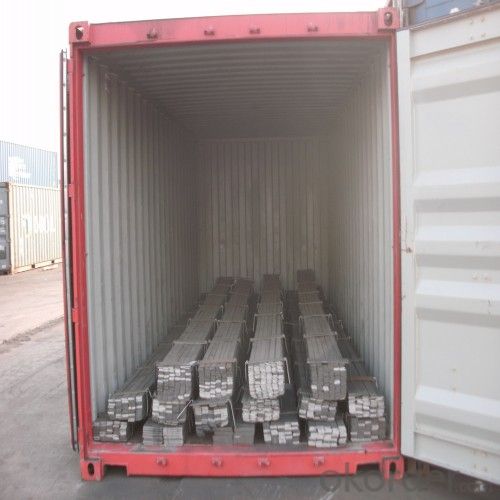
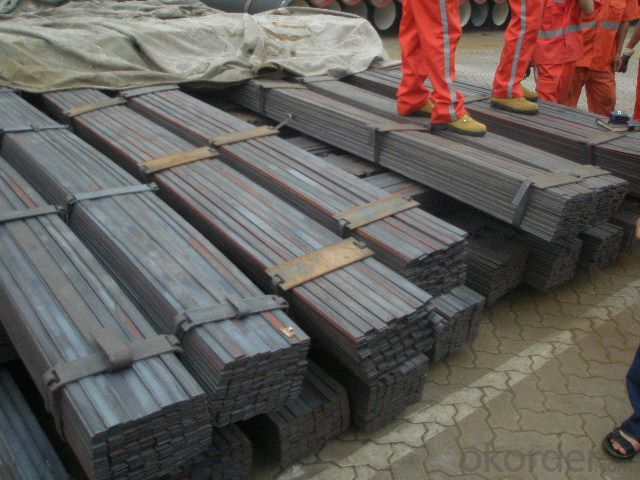
- Q: Can steel flat bars be coated with anti-slip materials?
- Coating steel flat bars with anti-slip materials is indeed possible. There are multiple techniques and substances accessible for achieving an anti-slip surface on steel flat bars. One commonly utilized substance is a non-slip epoxy coating that incorporates aggregates like aluminum oxide or silicon carbide. These aggregates generate a rough texture that improves grip and prevents slips or falls. Moreover, materials such as rubber, vinyl, or adhesive tapes with anti-slip characteristics can also be employed to enhance the slip resistance of steel flat bars. These coatings prove advantageous in locations where slip hazards may arise, such as walkways, ramps, stairs, or industrial environments. Applying anti-slip materials to steel flat bars in the appropriate manner ensures heightened safety and minimizes the likelihood of accidents across various settings.
- Q: What is the typical shear strength of steel flat bars?
- The typical shear strength of steel flat bars is approximately 50,000 pounds per square inch (psi). However, it can vary depending on the specific grade and thickness of the steel.
- Q: How do steel flat bars contribute to the overall sustainability of structures?
- There are several ways in which steel flat bars contribute to the overall sustainability of structures. Firstly, the use of steel flat bars ensures that structures have a longer lifespan compared to those made with other materials, as steel is highly durable and long-lasting. This reduces the need for frequent repairs or replacements, resulting in less waste and a lower overall environmental impact. Secondly, steel is a highly recyclable material, and flat bars can be easily melted down and reshaped into new products without losing their inherent properties. This reduces the demand for new steel production and the extraction of raw materials, leading to a significant decrease in energy consumption and greenhouse gas emissions. Furthermore, steel flat bars have a high strength-to-weight ratio, meaning that less material is needed to achieve the same structural integrity compared to other materials. This results in lighter structures, which require less energy for transportation and installation. Additionally, the reduced weight allows for more efficient designs, enabling the use of smaller foundations and fewer materials overall. Moreover, steel flat bars offer versatility in design and construction. They can be easily fabricated into various shapes and sizes, allowing architects and engineers to create innovative and efficient structures. The flexibility of steel flat bars also allows for greater adaptability and reusability, as structures can be modified or repurposed instead of being demolished and rebuilt. Lastly, steel is highly resistant to natural disasters such as earthquakes, hurricanes, and fires. Structures built with steel flat bars can withstand these events better, reducing the potential for severe damage and the need for complete reconstruction. In conclusion, the incorporation of steel flat bars into construction projects contributes to the overall sustainability of structures by providing durability, recyclability, lightweight design, versatility, and resilience to natural disasters. This not only minimizes waste and reduces energy consumption, but also lowers greenhouse gas emissions and creates long-lasting, environmentally friendly structures.
- Q: Are steel flat bars available in different colors?
- No, steel flat bars are not available in different colors. Steel is typically produced in its natural grey color, which is the result of its composition and production process. However, it is possible to apply different coatings or paint to steel flat bars to change their color. These coatings can provide additional protection against corrosion or simply serve aesthetic purposes.
- Q: Can steel flat bars be machined or drilled?
- Yes, steel flat bars can be machined or drilled. Steel is a versatile and durable material that can be easily worked with using various machining processes. Machining refers to the process of shaping or removing material from a workpiece using cutting tools, and drilling is one of the common machining operations used to create holes in a material. Steel flat bars can be machined or drilled to create specific shapes, sizes, or holes, depending on the desired application or design requirements. However, it is important to consider the hardness and thickness of the steel flat bar, as these factors can affect the choice of tools and machining techniques used.
- Q: What are the different sizes available for steel flat bars?
- Steel flat bars are available in various sizes ranging from 1/8 inch to 1 inch in thickness and from 1/2 inch to 12 inches in width. These sizes can vary depending on the manufacturer and specific requirements for a project.
- Q: What are the load capacities of steel flat bars?
- The load capacities of steel flat bars vary depending on various factors such as the dimensions (width, thickness, and length) of the bar, the type of steel used, and the specific application it is being used for. Steel flat bars are known for their high strength and durability, making them capable of supporting significant loads. However, it is important to consider the specific requirements and constraints of the application in order to determine the appropriate load capacity. Load capacities for steel flat bars can be calculated using engineering formulas and standards. These calculations take into account factors such as the maximum stress the bar can withstand without deformation or failure, the support conditions (e.g., whether the bar is fully supported or simply supported at both ends), and the distribution of the load along the length of the bar. It is advisable to consult engineering handbooks, codes, or professional engineers to accurately determine the load capacity of a specific steel flat bar for a particular application. They can provide the necessary calculations and guidance based on the specific requirements, ensuring that the load capacity is not exceeded and that the safety of the structure or component is maintained.
- Q: Can steel flat bars be used for making sculptures?
- Yes, steel flat bars can be used for making sculptures. They are a versatile material that can be easily shaped and welded to create various forms and structures in sculptural works.
- Q: Are steel flat bars suitable for making brackets or supports for water treatment systems?
- Steel flat bars are indeed a suitable option for crafting brackets or supports in water treatment systems. Renowned for its robustness and endurance, steel is an exceptional choice for bolstering weighty machinery or constructions. Moreover, steel's resistance to corrosion is of paramount importance in water treatment systems, where encounters with moisture are frequent. The malleability of steel flat bars allows for effortless customization into diverse forms and dimensions, catering to specific necessities and granting stability and dependability to the overall system. Hence, the utilization of steel flat bars in the creation of brackets or supports guarantees enduring and robust reinforcement for the equipment involved in the treatment process.
- Q: Are steel flat bars used in the manufacturing of appliances?
- Indeed, steel flat bars find widespread application in the fabrication of appliances. Recognized for its durability and strength, steel boasts outstanding structural integrity, rendering it an optimal choice for appliances necessitating stability and support. Frequently employed in the assembly of appliance frames, brackets, and structural elements, steel flat bars furnish a steadfast base for diverse appliance components, thereby guaranteeing the longevity and dependability of the final product. Moreover, the malleability and weldability of steel flat bars facilitate effortless customization, enabling manufacturers to tailor designs and configurations to meet precise appliance specifications.
Send your message to us
Hot Rolled Steel Flat Bars with Material Grade Q235
- Loading Port:
- Tianjin
- Payment Terms:
- TT OR LC
- Min Order Qty:
- 25 m.t.
- Supply Capability:
- 10000 m.t./month
OKorder Service Pledge
OKorder Financial Service
Similar products
Hot products
Hot Searches
Related keywords
